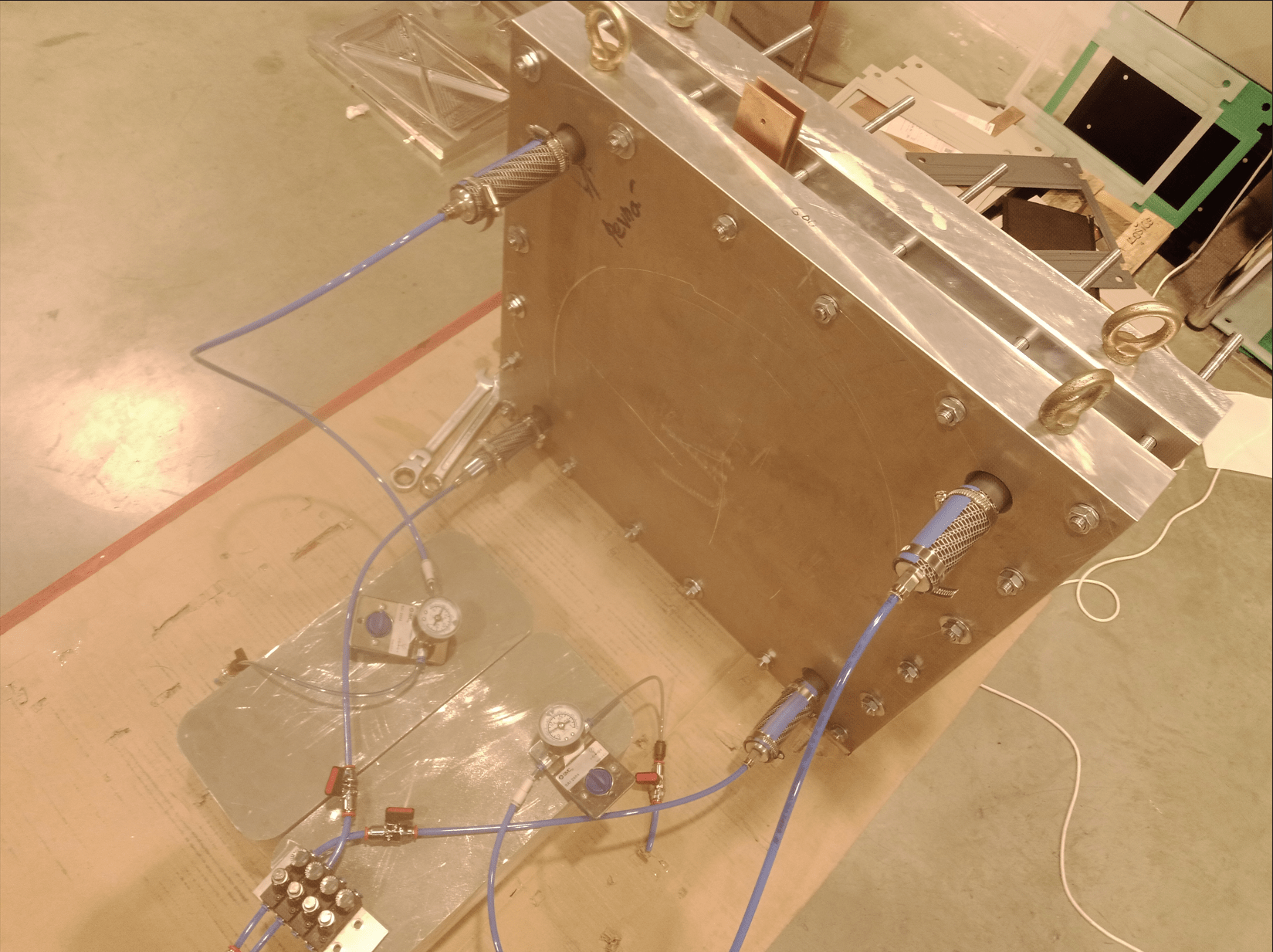Stack design evaluation
We scaled up our successful laboratory cell with 50cm2 of electrode area to a large stack with over 1000cm^2 electrode area.
In doing so we had to design several parts such as frames and distribution plates to route the electrolyte through the electrodes.
The newly designed parts were manufactured by our cooperation partners at TUKE and other manufacturers.
In the next phase we tested the sealing concept of the design for leakages.
In order to do that we started to assemble a single cell with the new large components (1-cell-stack) and performed two different experiments.
- Outer perimeter sealing evaluation
- Inner perimeter sealing evaluation
The 1st one is described below. Stay tuned for second experiment !
Outer perimeter sealing evaluation
The first test to be performed was the “air-pressure test” to check for any possible external leakages of the sealing concept.
External leakages means: electrolyte that is pumped into the stack can breach the sealings and become visible on the outside of the stack.
In order to test the hydraulic properties a 1-cell-stack was assembled and pressured air was applied to the short stack.
Pressure sensors were installed on the inlet and on the outlet of the stack.
Pressured air is a simple method to check for external leakages similar to a tire on a bike that is pressurized.
The first several tests showed some leakages that were related to the distribution plate.
After some adjustments to the distribution plates we were able to seal the stack so that no external leakages were detected by air flowing out of the stack.
ACKNOWLEDGEMENT:
This work was supported by the project: IPCEI_IE_FLOW_BESS_012021


